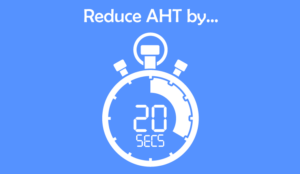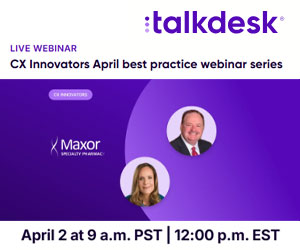Eric Hagaman at Aspect shares tip for returning to the office safely.
As vaccines roll out and the world continues to adjust to COVID-19, how can your workforce management team plan for use of your contact center facilities to meet all applicable state safety restrictions, provide confidence to staff who may be reluctant to return to a facility, while at the same time provide records of employee workspace assignments for each moment over time to assist in contact tracing if that becomes a necessity?
In addition to complying with all relevant restrictions, it is also important to have a plan that can be clearly communicated, simple to follow, and is visible to help make employees more confident so that they could use facilities safely and focus on being productive while working.
You may be considering rotating staff through facilities, using seating as-is, restricting certain positions or starting over with a whole new build-out.
For a safe use of facilities during disease risk, many factors have greater importance, for example:
Planning for Arrival and Departure of Staff
- Ensure that capacity of check-in and check-out lines and portals into your facilities are not overcrowded
Planning for Specific use of Space Within the Facility
- Workstation Spacing – Even prior to COVID, research into facilities impact on influenza identified that people who work in open office spaces, those with workstations close together with no barriers in between them, tend to take more days off work because they say they are sick more frequently than those with office environments where positions are further apart from each other or have barriers
Lanes of Ingress and Egress to Minimize Employees Passing Past Other Employees:
- In and out of the contact center itself
- Lanes of ingress and egress from work areas to shared spaces like break rooms, bathrooms and shared equipment
- Equally important is a new business culture which ensures each employee scheduled to use the facility has an assigned location to work, that the location has all the equipment needed for the employee to do their job, sufficient time is allocated for cleaning the area either by cleaning staff or procedures employees need to follow before and after their use of that position.
These are likely different goals than those used to build your prior floor plan before the pandemic. The good news is that Aspect® Workforce Management™ tools can help you meet these challenges.
Employee Preference
- If your business allows, consider starting with pilot work “at the office” programs for limited amounts of staff to “start small, refine fast” to test out policies, procedures, get feedback from employees and from facilities experts on what to change to scale up to larger groups.
- Collect employee preference by a survey to participate in a pilot group or return in later phases of facilities occupation.
- Consider creating an Employee Preference Set to collect from employees the days/times they would prefer to be scheduled to work in the facility.
- Consider creating a new Employee Group Tree to record the status of employee’s preference for a return to office by date. Similarly, new Extra Employee Field or Fields could be used to store this information and make it easy for the Workforce Management team to filter for the employees who volunteer to return to office as of certain dates.
Scheduling
- If your new facilities plan has less seating than before, use limits on the number of facilities-bound schedules that may be created using the Aspect Workforce Management scheduling scenarios, or consider creating a Roster which can help if you are planning to rotate employees into office duty.
- If you have cleaning plans requiring each employee to wipe down work areas at the beginning and end of shifts, add those times into Official Schedule specifically using Segment Window Rule Sets.
- If you have cleaning plans where an entire section of seating positions (sometimes called pods) need to be vacated for some time for cleaning, consider using Team Scheduling where the team is the group of people assigned to that group of furniture, this can help you assure employees are scheduled with the same start and stop times.
- Be sure to use the schedules in-facility as a base staff in schedule creation as you supplement with work at home, outsourcer or business partner, part-time, flex and other types of schedules to meet your workload.
Seat Management
- Consider the Aspect Workforce Management Reserve capability, which allows you to define your unique physical space, seating positions, employee assignment to seating positions over time, tools to match employees to positions, and visibility to assigned seating positions for each employee as well as their supervisors, and also provides a historical record of each employee’s seating position over time. Key capabilities include:
- Define each position, list any equipment or characteristics of the physical position
- Create a floor plan showing the relative position of the seating positions, other equipment, portals in and out of the space, conference rooms, break rooms, etc.
- Generate a plan which ensures that sufficient open space exists between seating positions and that no employees are assigned to positions which are less than six feet from other positions
- Assign one employee at a time, minute by minute, to a position
- Identify employees without an assigned seat during scheduled times
- Identify open positions for those employees, ranked by business criteria such as proximity to a supervisor, proximity to imported shared resources, to aid in the assignment process
- Visibility of assigned seating position to each employee before they arrive at the office, so employees know where to work
- Visibility of assigned seating positions to each supervisor (and the workforce management team) so managers know where to expect employees to be
- Historical record of employee seating positions over time, to assist in contact tracing efforts should that become necessary
Your facilities management team plays a crucial role and is likely aggressively evaluating how to implement changes recommended to create ‘healthy buildings’.
In addition to evaluating all types of physical space suitability from how occupied spaces are ventilated, redesigning airflow around workstations to minimize shared air, how often air filters are changed and what type are used, the humidity range maintained, entry and exit routes, employee (and potentially visitor) check-in procedures, and more.
The workforce management team has an equally crucial role to play, by using existing capabilities in new ways and considering the use of Workforce Management capabilities that may be new to you.
Author: Guest Author
Published On: 5th May 2021
Read more about - Guest Blogs, Alvaria



































